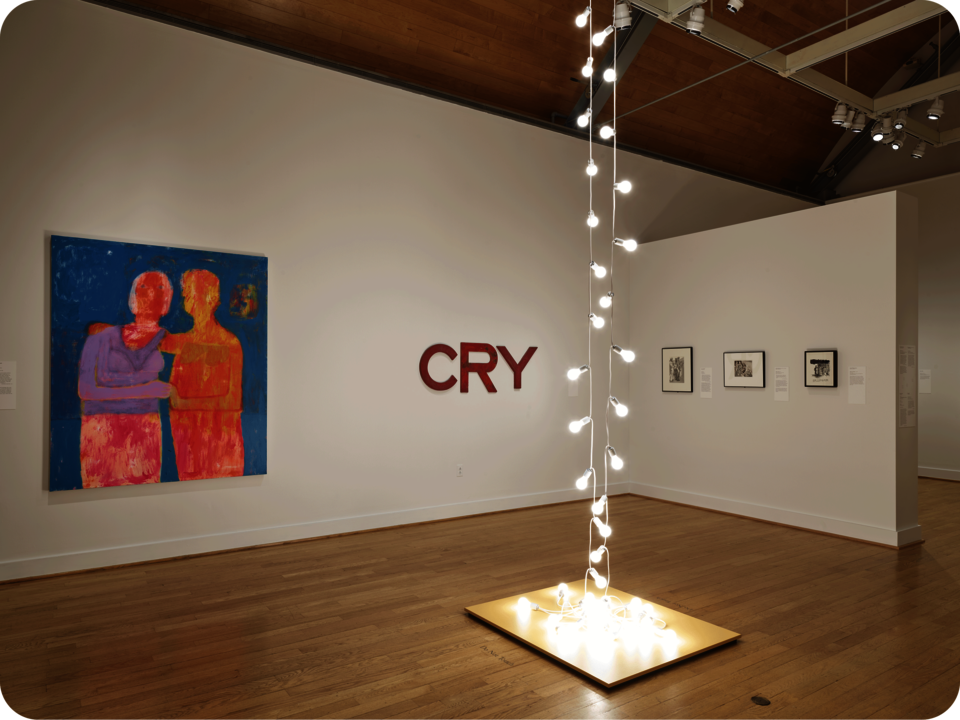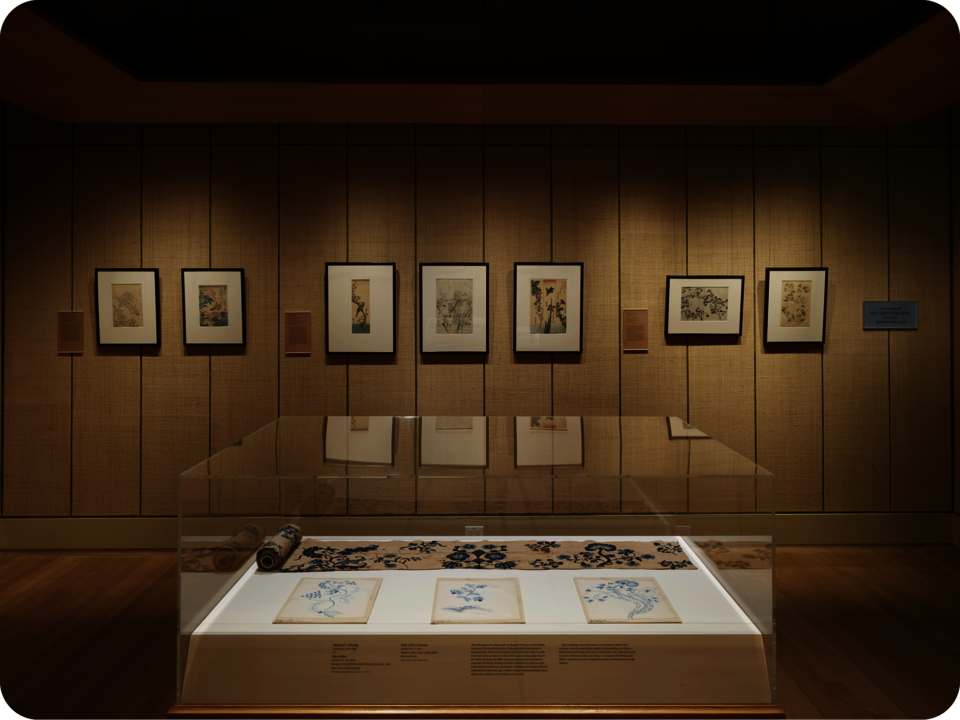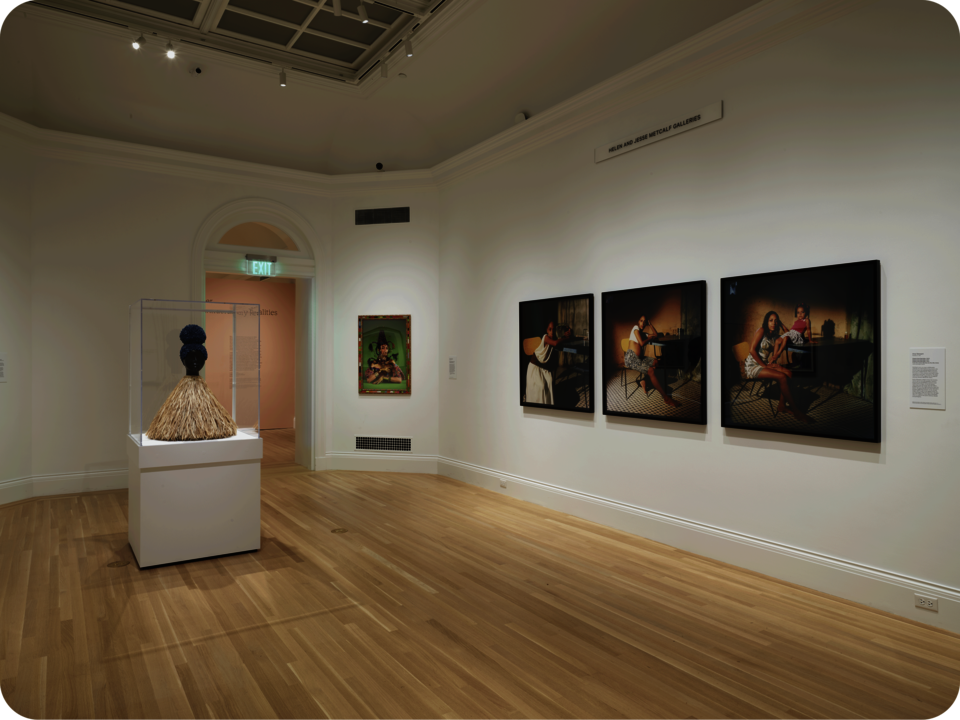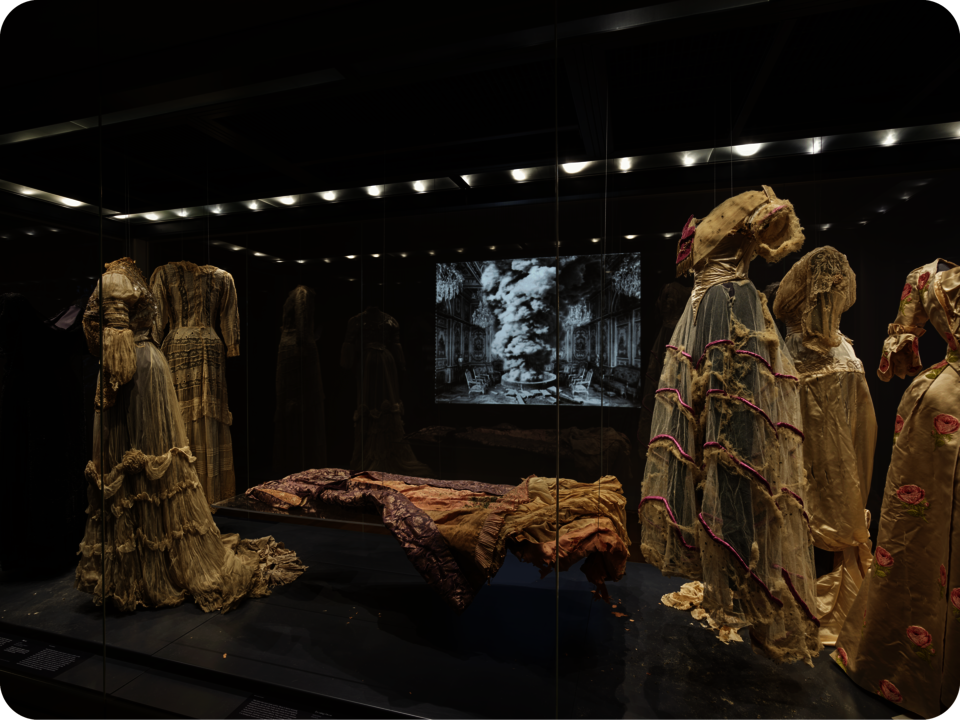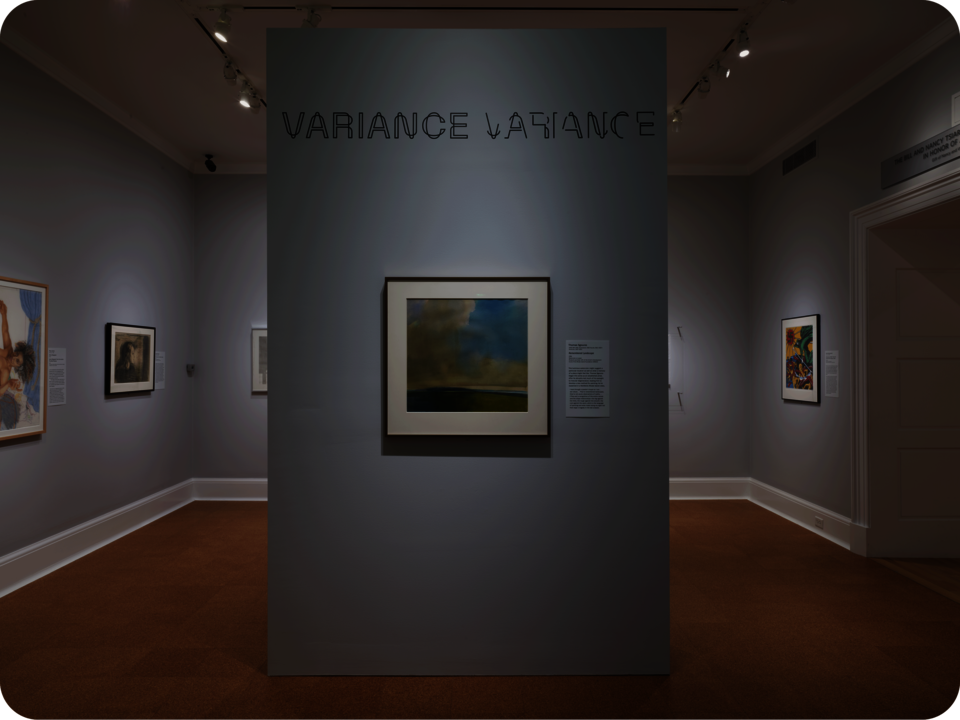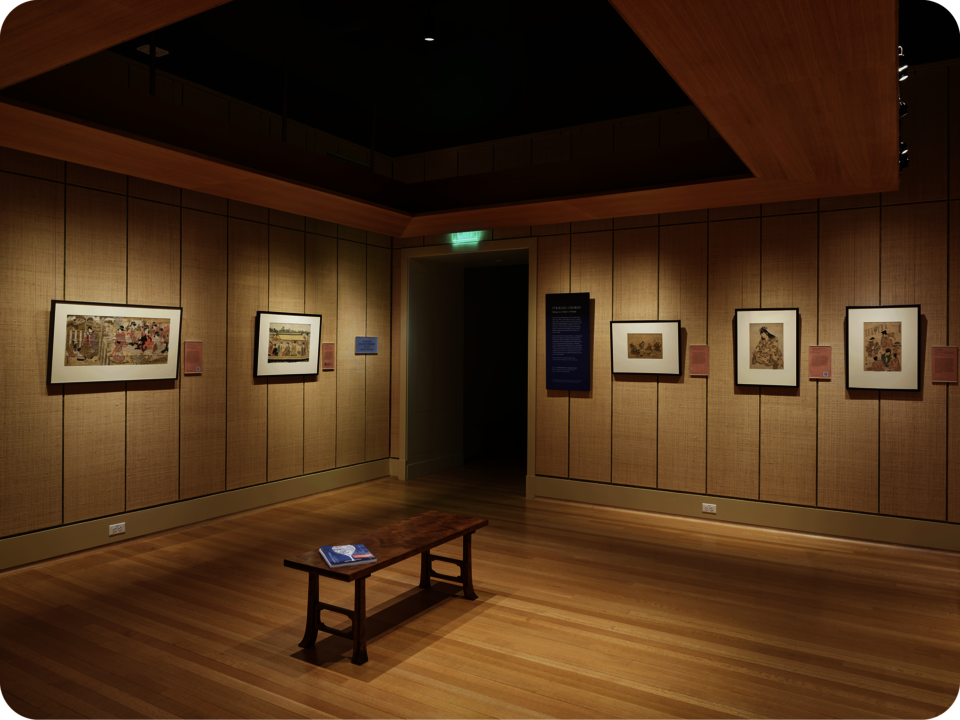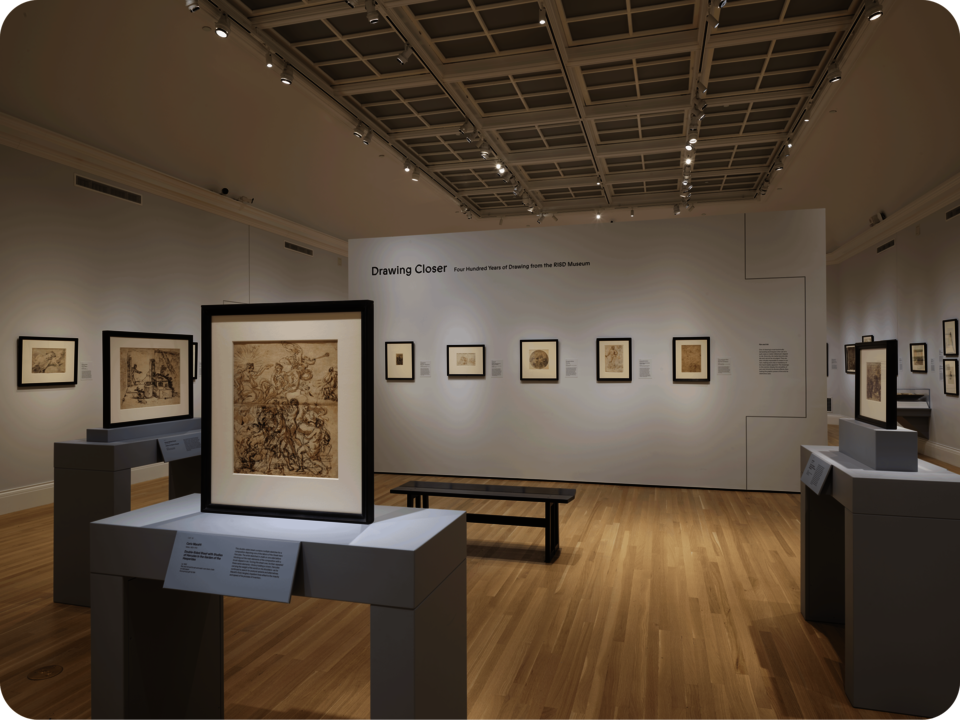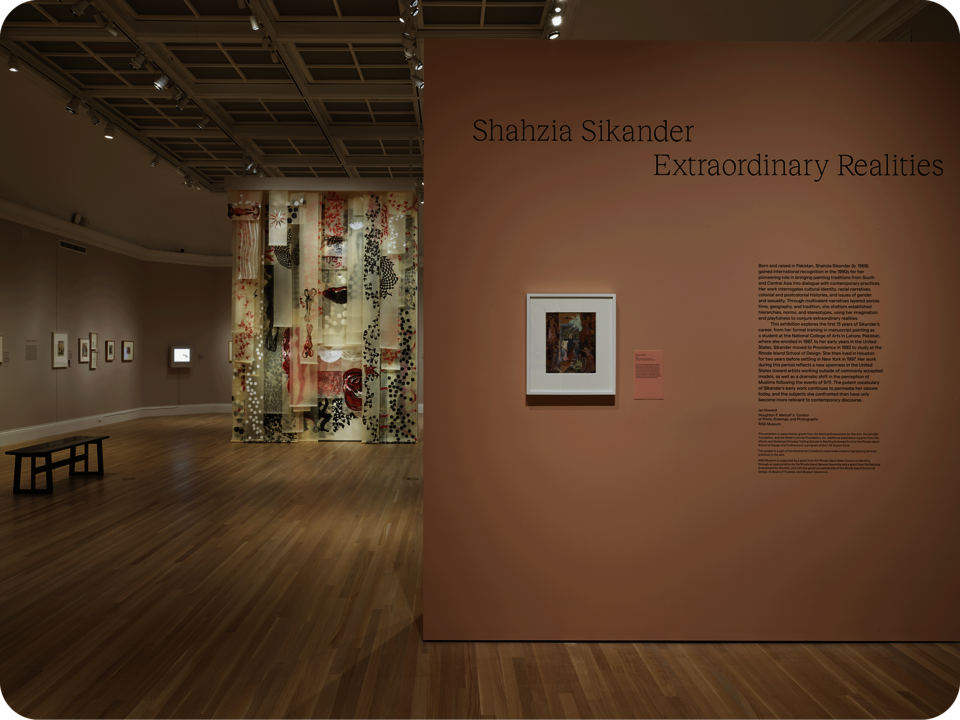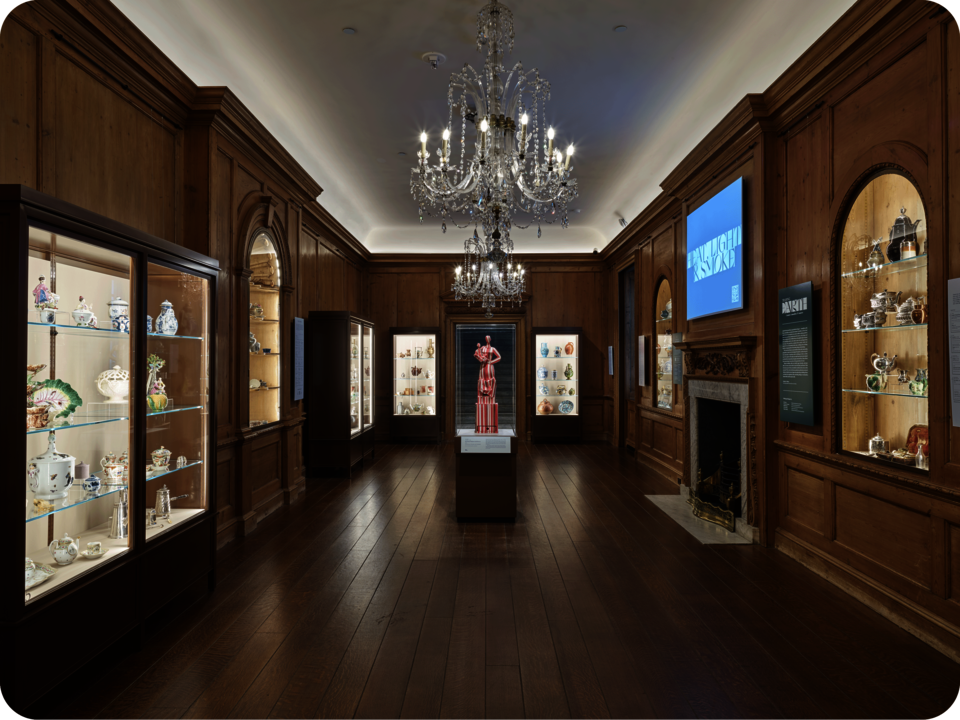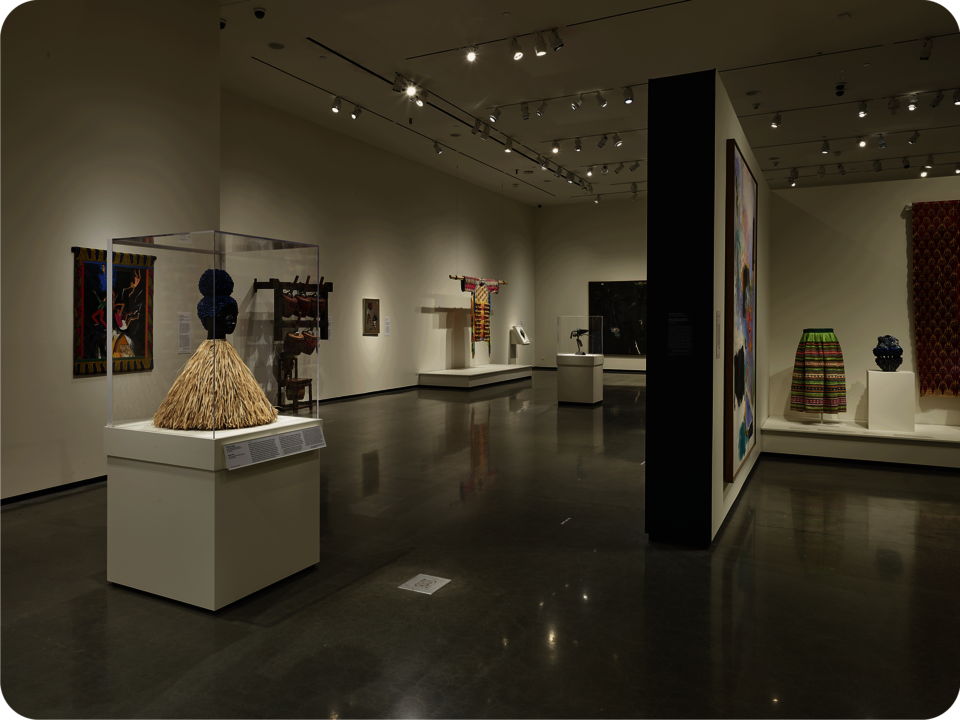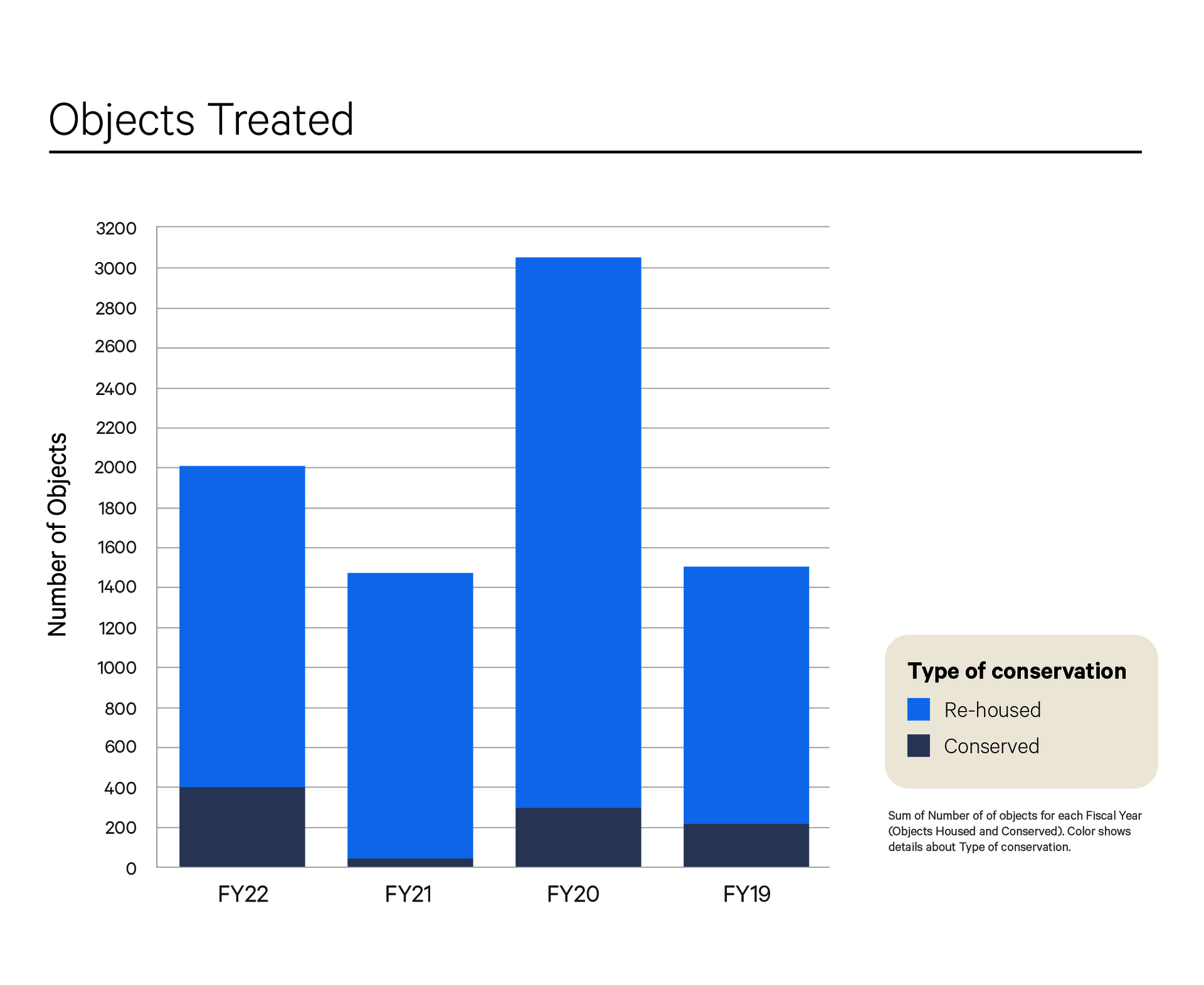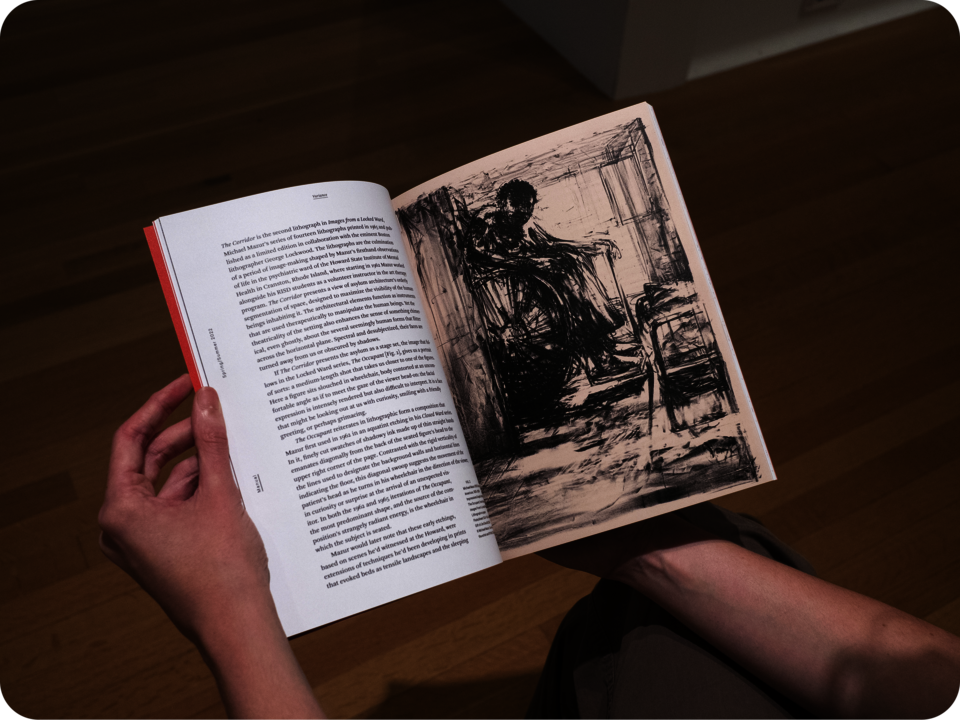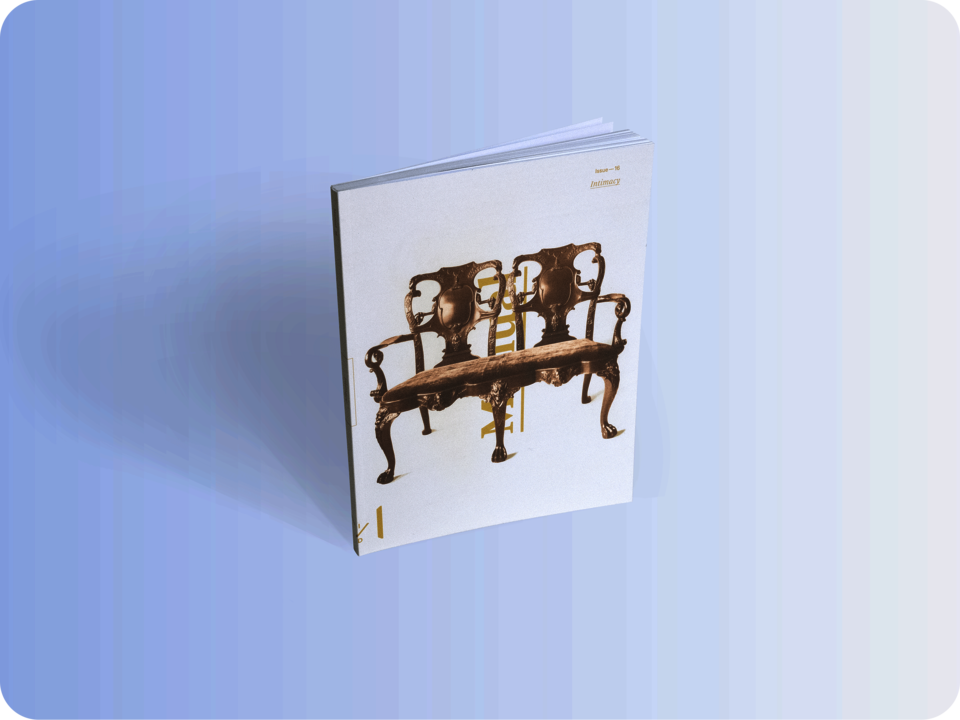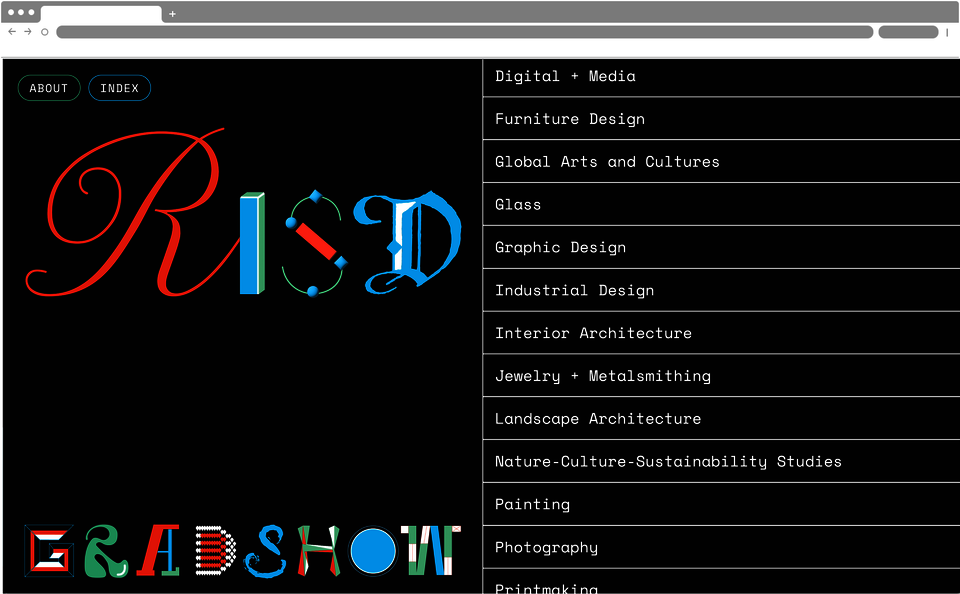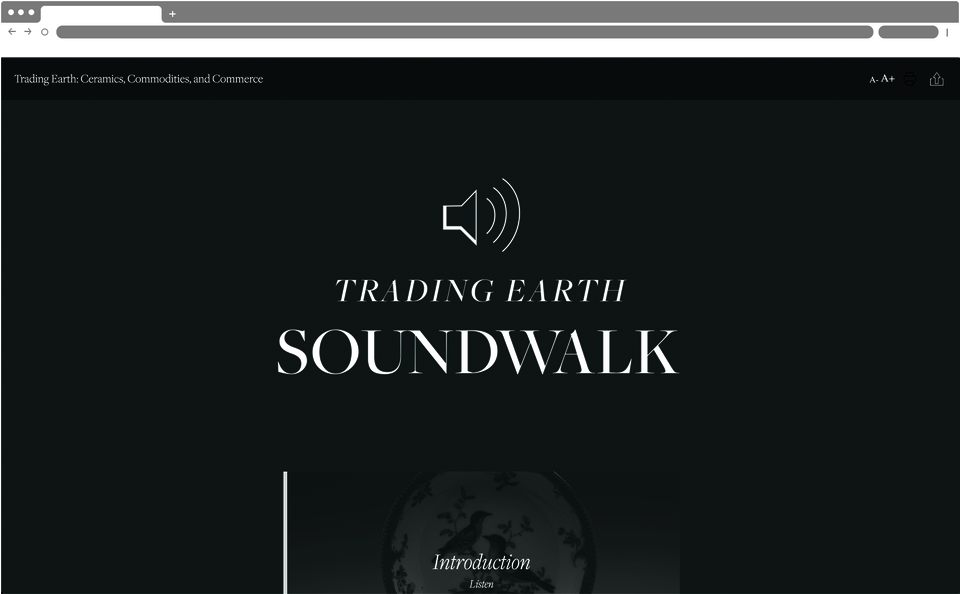Art
Our collection currently contains more than 100,000 works of art and design dating from ancient times to the present including paintings, sculpture, photography, prints, decorative arts, costume and textiles, and furniture from all over the world. Objects enter the collection via purchases with our acquisition funds, as well as gifts and donations from collectors, artists, and others.
Sharing our collection with the public is central to our mission, and this section outlines all of the work involved in acquiring, documenting, displaying, interpreting, protecting, and storing these objects to make that sharing possible.
The RISD Museum presents several temporary and traveling exhibitions as well as new collection displays each year, which are shaped by insights from curators, educators, artists, students, and neighbors. These projects often include associated publications, symposia, programs, and/or other virtual and in-person events.
Exhibitions at RISD Museum 2021/2022
Complete Definitions; Dorner Prize 2021 ↗
New to the Collection
New to the Collection - Recent acquisitions relating to Shahzia Sikander
RISD Faculty Exhibition and Forum ↗
Student Intervention project for *Inherent Vice: Experimental Research Studio*, RISD Wintersession course
Inherent Vice: Hidden Narratives ↗
Variance: Making, Unmaking, and Remaking Disability ↗
Striking Chords: Music in *Ukiyo-E* Prints ↗
Perception and Presence in Contemporary Drawing
Drawing Closer: Four Hundred Years of Drawing from the RISD Museum ↗
Shahzia Sikander: Extraordinary Realities ↗
Trading Earth: Ceramics, Commodities, and Commerce ↗
Sky Hopinka: In Dreams and Autumn
For more than a century, the RISD Museum has been actively collecting art and design objects representing global artistic traditions from ancient times to the present. In any given year, several hundred objects enter the collection through donation, purchase, and bequest. As part of the museum's anti-racist work plan, the RISD Museum is committed to spending at least 75% of our acquisitions budget on work by underrepresented makers.* In fiscal year 2022, the museum spent $782,301 on new acquisitions from our endowed acquisitions fund, $646,871 (83%) of which went toward the purchase of work by BIPOC, women, and LGBTQIA2S+ artists and makers. Acquisitions come into the museum collection by donation, bequest, or purchase. Purchased objects are paid for with funds that are restricted to this purpose and cannot legally be spent elsewhere at the museum. That is, these dollars are earmarked specifically to expand our collection in order to enrich the learning experiences of our visitors.
Highlights from our recent acquisitions include works by two RISD Native American alumnae: "Breach: Logbook 21/Nebulous/Artifice CSW2" by Courtney Leonard (Shinnecock and RISD MFA 2008, Ceramics) as well as "Reincarnation" and "Shard" by Rose B. Simpson (Kah'p'oo Owinge/Santa Clara Pueblo and RISD MFA 2011, Ceramics); work by Emma Amos; two works by Gee’s Bend quilters Ruth Pettway Mosley and Sally Bennett Jones; and a painting by RISD alumnus Nathaniel Oliver, which was the first sale to a museum by HOUSING, the Black-owned and operated gallery that represents him.
* The term "underrepresented" is imperfect, but we use it to refer to people who are historically and presently excluded from museums, including but not limited to Black, Indigenous, and People of Color (BIPOC), LGBTQIA2S+ people, people with disabilities, and women.
Image

▲ Rose B. Simpson (RISD MFA 2011, Ceramics), Reincarnation, 2021. Helen M. Danforth Acquisition Fund 2021.40.1
Image
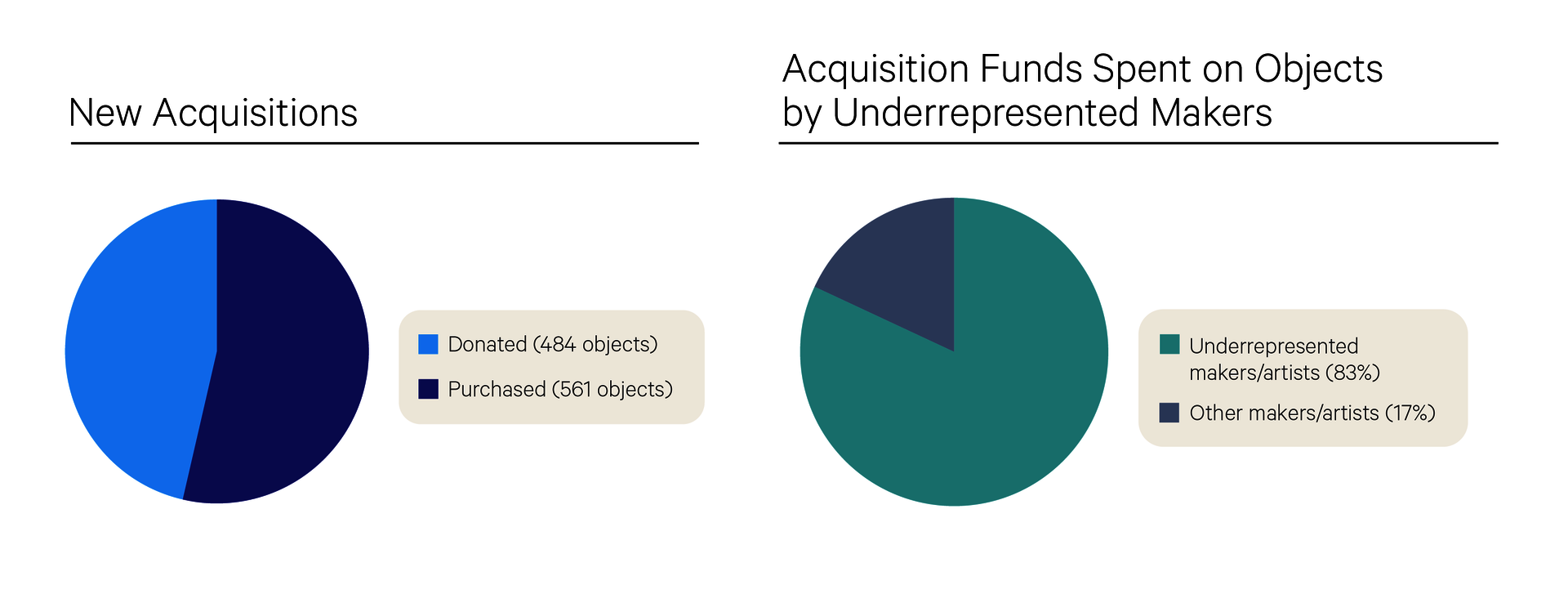
Providing access to the collection in the galleries and online offers opportunities to deeply engage with art, artists, ideas, and perspectives that can be unexpected, inspiring, and complex. As part of our open access policy, we provide information about our collection objects on the museum's website for free. This includes everything from dimensions and materials to how an object came into the collection.
2,317 Objects on view in galleries
This figure refers to the number of objects in our collection that were brought out of storage for study. When in-person classes are possible, these objects would be brought out by museum staff for display and study in a gallery or one of our study centers. When classes study an object virtually, the object itself can be displayed over Zoom, but students can also view high-resolution images of the objects in order to replicate the close looking experience in a virtual setting.
1,625 Objects photographed
The museum creates, manages, and maintains high-resolution direct-capture digital studio photography of collection objects, new acquisitions, and objects loaned to the museum from other institutions. The range of work includes photography of individual collection objects in the photography studio and in the museum galleries; exhibitions installation photography; and collection conservation, condition, and treatment photography.
82,913 Objects on our website
Our Creative Commons Universal dedication means that digital images of any objects in the public domain are also available for any purpose. New digital products for which the RISD Museum is not the sole rights holder—for example a photograph of a copyrighted artwork—are made available for fair use as defined in the U.S. Copyright Act of 1976 (17 U.S.C, section 107). We want our collection, scholarship, and interpretive content to be accessed, distributed, and reused by everyone.
1,655 Digital assets with alt text
This past year, it became standard practice at the museum to incorporate alt-text into digital publications and website imagery so that image descriptions can be read by screen readers for those with visual impairments
Image
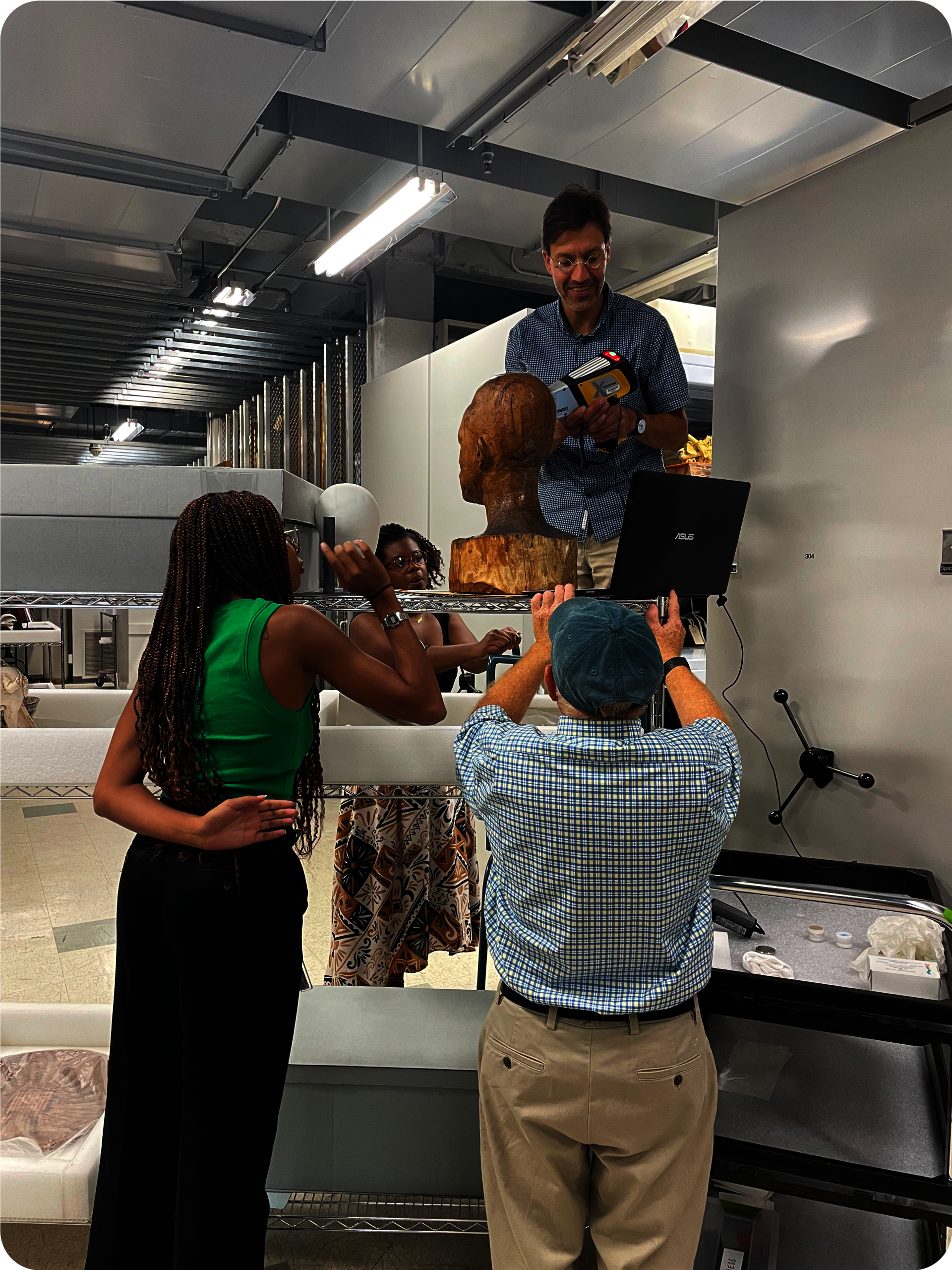
▲ Conducting XRF testing on a Nancy Prophet sculpture with scientists from Brown University and Kajette Solomon and Amadi Williams, two year Weil Objects Conservation Fellow.
The RISD Museum regularly loans objects from our collection to other museums and institutions. These may be short-term loans (for a time-limited exhibition, for example) or long-term (such as a gallery reinstallation that may last several years). Lending objects from our collection for display in other places supports our mission to share important works of art and design with the public, and it also helps to raise awareness of the museum and the collection.
Image
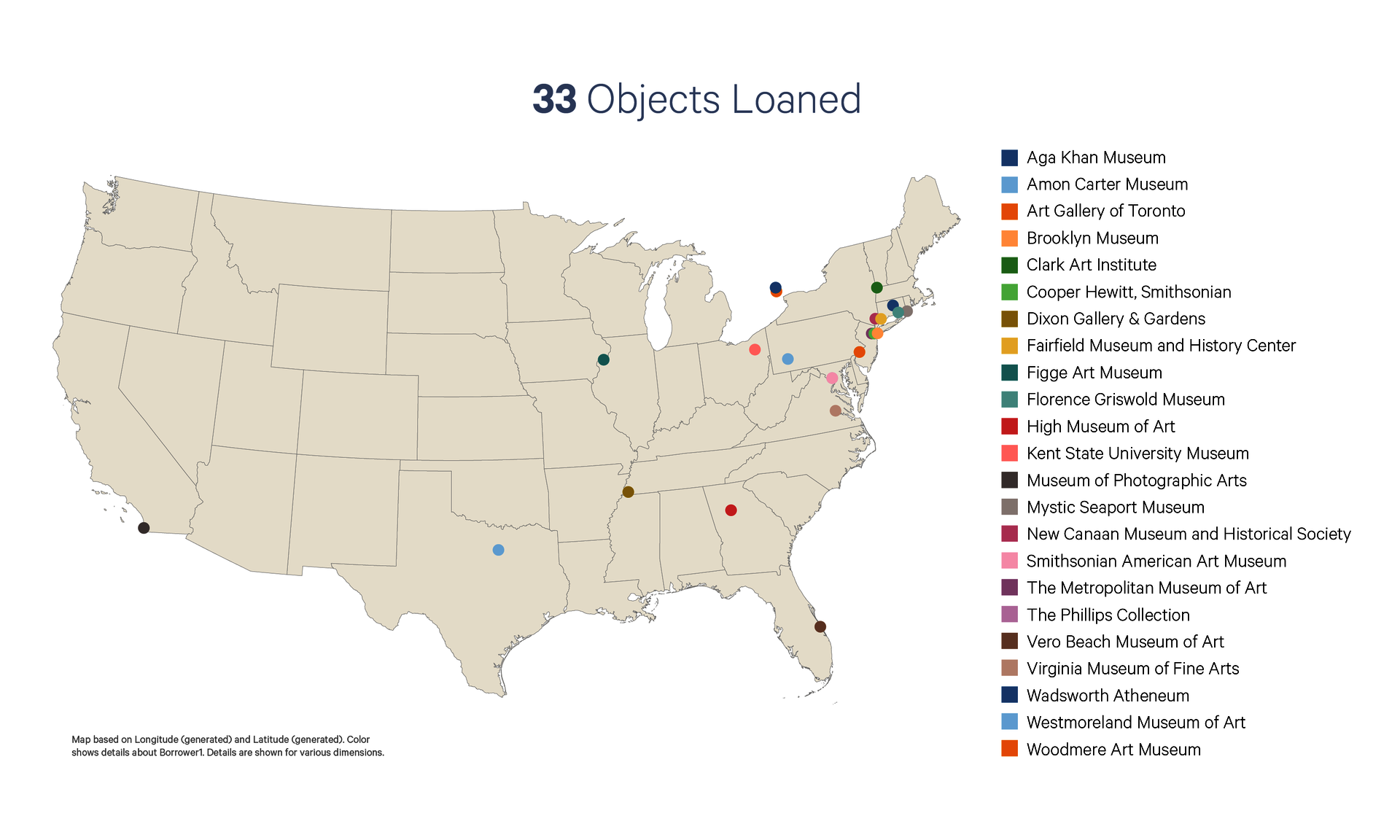
Conservation encompasses many activities that ensure the safety and longevity of our collection objects, including cleaning and polishing, repairs, removal or mitigation of hazardous materials, matting and framing, material identification, photography, stabilization, and addressing proper storage needs. Applying preventive conservation techniques ensures that objects can be shared with the public in a manner that is safe for staff, visitors, and the objects alike. The number of objects treated and re-housed each year can vary widely, depending on the size, medium, and the extent of any deterioration.
In just one example of this work, we received a Preservation Assistance Grant from the National Endowment for the Humanities to support the rehousing and cataloging of our 18th- and 19th-century wallpaper collection–which comprises the period during which arsenic was widely used in the production of wallpaper paints–in order to improve both safety and access. The RISD Museum’s collection of wallpaper is one of the largest and most historically significant collections of wallpaper in America.
Image
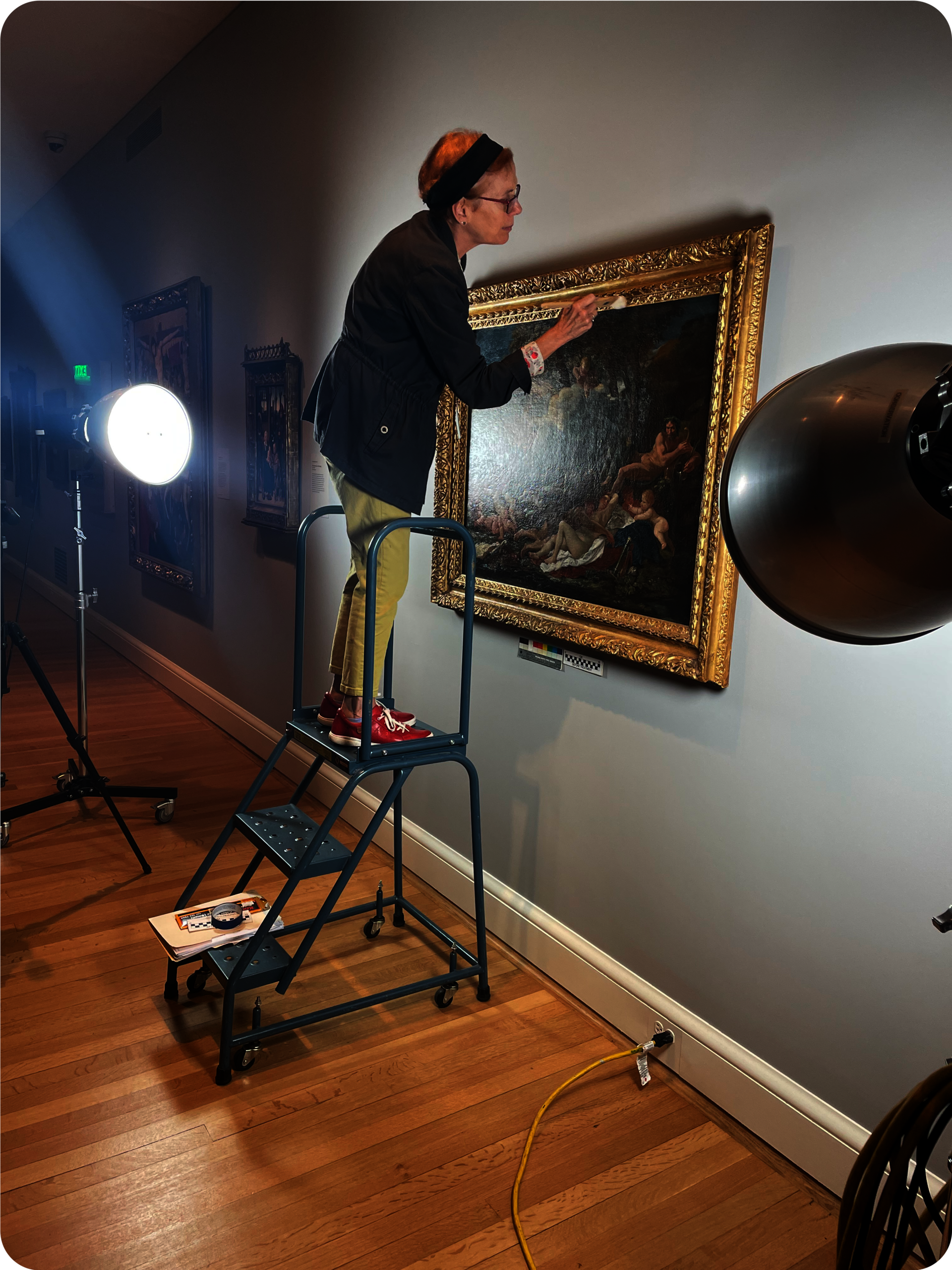
▲ Contract paintings conservator, Liza Leto Fulton.
Image
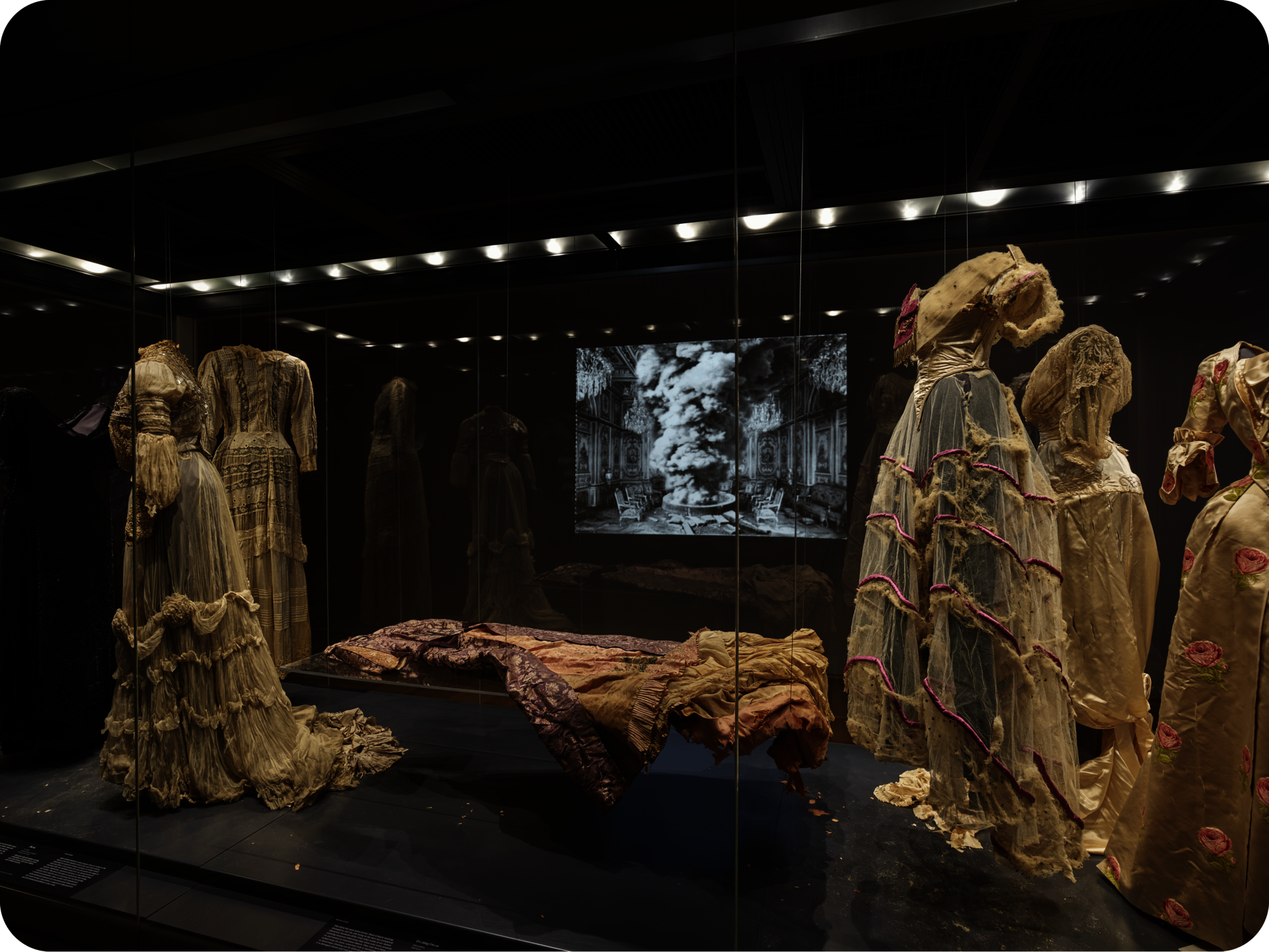
▲ Installation view of Inherent Vice.
Some of our work also involves deaccessioning objects, meaning they are removed from our collection after thorough research by curatorial staff and approval by the museum’s Fine Arts Committee and Board of Governors. After deaccessioning, an object can then be given to another institution, sold, or returned to a rightful owner. The RISD Museum is committed to work transparently toward deaccessioning, repatriating, and making restitution for collection objects with problematic histories of ownership.
For instance, this year a number of deaccessioned objects from our Costume and Textiles collection became the subject of Inherent Vice. In the summer of 2021, we started a discussion about what to do with 31 extremely degraded garments. We could leave them in storage, too fragile to teach from or exhibit; pour resources into stabilizing them; or look at them as openings for new understandings. With the board’s approval, we began the process of deaccessioning these garments from the collection and transferring them to RISD’s Apparel Department for student use. A wintersession 2022 course explored the topic of inherent vice, which is the tendency in an object or material to deteriorate or self-destruct because of weak construction, poor quality or unstable materials, and incompatibility of different materials within an object (American Institute for Conservation [2021]). In the spring, an apparel studio class offered students the chance to dissect the garments, while a textile silkscreen class created new work in response to the prompt “hidden stories.” The students’ artwork was presented in an exhibition at the museum, along with a selection of deaccessioned garments.
The museum has a long history of publishing books that accompany our exhibitions and special projects and explore our collections. For many years these publications were issued only in print, but after working in partnership with Oomph, Inc., to develop an open-source platform called Ziggurat in 2019, the museum now also produces dynamic digital publications.
Exhibition Publications
In fiscal year 2022, the museum released Drawing Closer: Four Hundred Years of Drawing from the RISD Museum. With a focus on materials and the functions they served both in the artist’s studio and in the world outside it, Drawing Closer brought together 67 works from the museum’s remarkable collection of European drawings produced between the 1500s and the 1800s.
Image
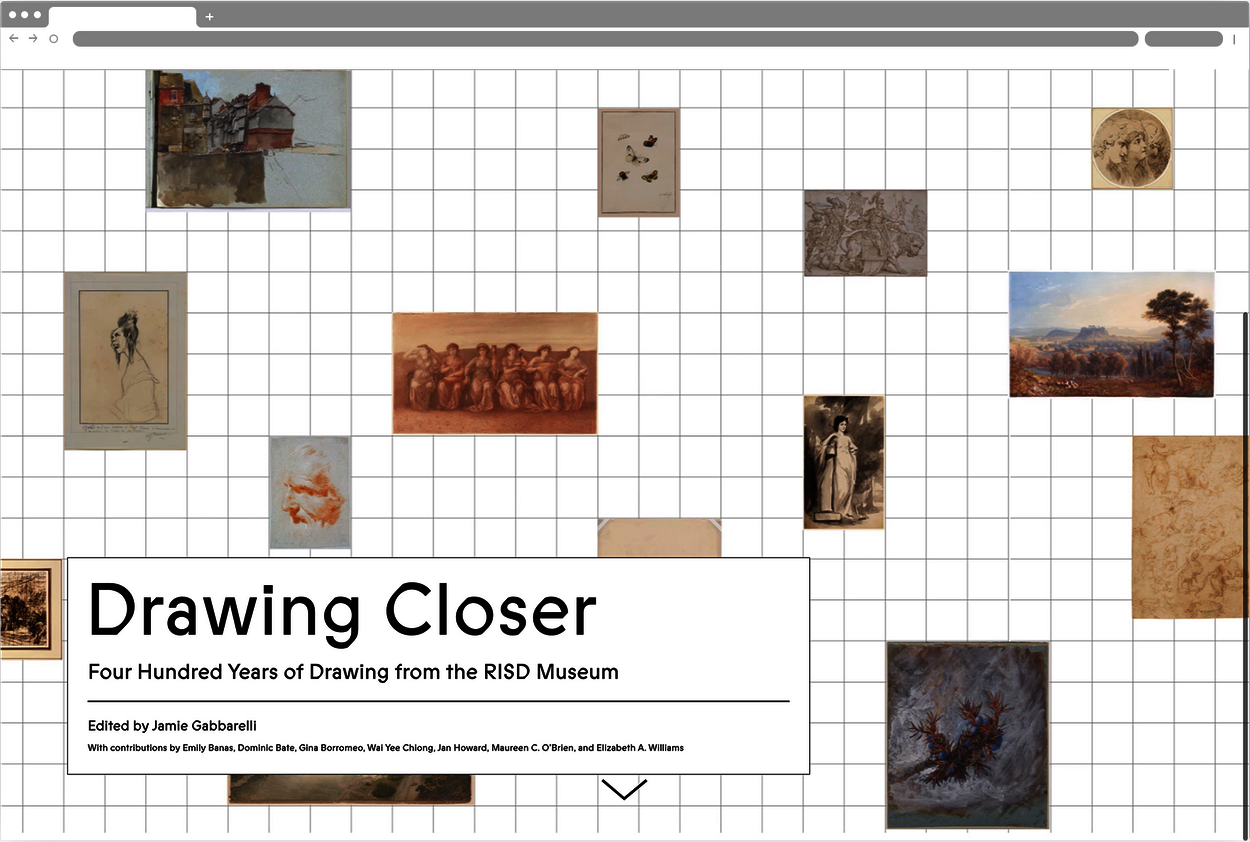
Manual
Manual: a journal about art and its making, the museum's journal, uses our collections, exhibitions, and collaborations as an impetus for essays and interviews, artist interventions, and archive highlights. A fusion of academic arts journal and design magazine, Manual is a resource for conversations about art, design, and the impact of creative making by artists and designers, curators, educators, and scholars.
Manual 17 was the first completely digital version of the journal, a change we made in order to utilize the accessibility features we designed when we developed our digital publication platform. For example, we worked with a consultant to ensure that the publication accommodated screen readers, so that our sight impaired visitors could have a meaningful experience with the content.
Special Projects
RISD Grad Show 2022 highlights the creativity of students at all stages of the thesis process, from sketches and drafts to completed works. The Grad Show was presented both as an in-person exhibition at the RISD Museum’s Chace Galleries and the WaterFire Arts Center–which was open to current RISD students, faculty, and staff–and to the general public as a digital publication that showcased work by RISD grad students across 18 advanced-degree programs.
We also created a soundwalk to accompany Trading Earth: Ceramics, Commodities, and Commerce. Drawing on centuries of works from across the Americas, Asia, Europe, and Africa, the exhibition focuses on global trade and ceramic objects made to store, serve, or consume staples and luxury commodities grown in soil or extracted from the earth.
